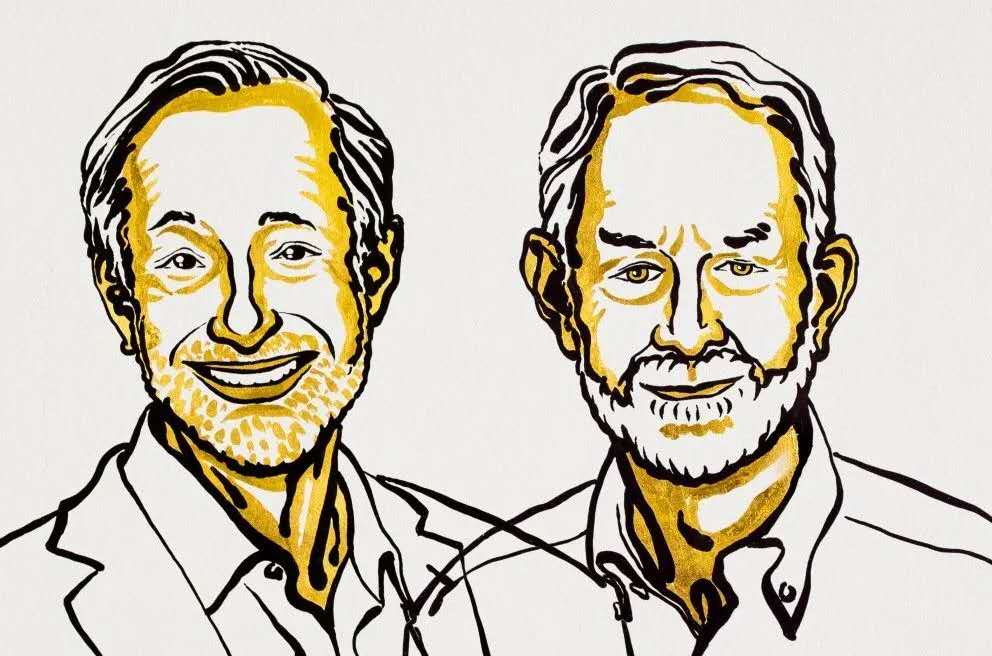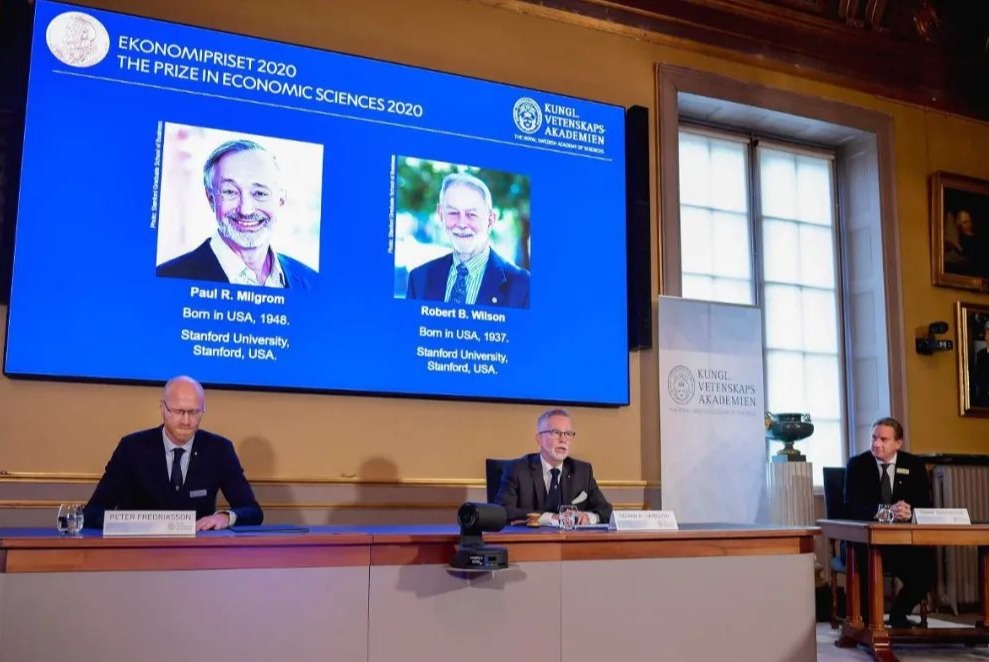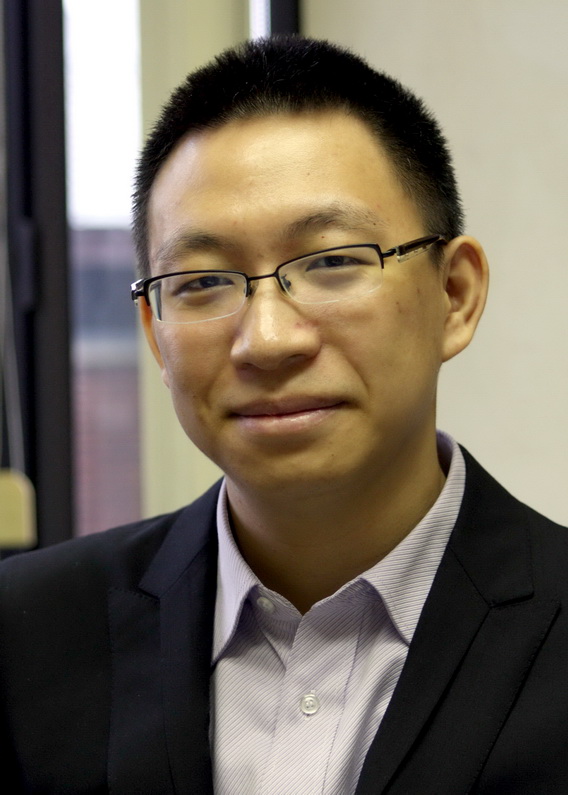SECTIONS Guanghua Insights
The 2020 Nobel prize in economics was awarded on October 12 to Paul Milgrom and Robert Wilson, a teacher-student duo as well as neighbors, for advances in auction theory that “have benefitted sellers, buyers, and taxpayers around the world.”
According to the Royal Swedish Academy of Sciences, they have used their insights to design new auction formats for goods and services that are difficult to sell in a traditional way, such as radio frequencies. Weng Xi, an applied economics professor with Peking University’s Guanghua School of Management, reviews the development of auction theory in economics and explains the innovative method invented by the prizewinning duo.

Paul R. Milgrom Robert B. Wilson
LONG HISTORY
To most people, an auction is usually held in a grand hall where bidders keep raising the price for an item on sale under the guidance of an auctioneer, and the item eventually goes to the highest bidder.
With the onset of the digital economy, more and more ordinary people are taking part in auctions, many of which are held online and easily accessible. Both eBay and Taobao started out with an auction-style trade as their main business and then gradually switched to a fixed price format. Google and Baidu even applied the auction mechanism to keywords and made it the canonical profitable business model for online search engines.
Auction has a long history. It is believed that the Babylonians used to auction women into marriages with the highest bidding men. In ancient China, assets belonging to a deceased monk would be auctioned off to pay for his funeral as well as to support the management of his local monastery.
Despite its prevalence, the auction had hardly attracted any attention from economists — until the 1960s when William Vickrey from Canada studied the revenue and efficiency properties of various auction formats and developed what became known as auction theory. According to his method, bidders submit written bids sealed in an envelope without knowing the bid of competitors. The highest bidder wins but the price paid is the second-highest bid.
Economists have since resorted to various theories and tools to pin down the optimal auction format in terms of personal values, common values, and added values, but most of these studies were at the theoretical level and had nothing to do with real-world auction activities.

OUT OF IVORY TOWER
Auction theory finally ventured outside the ivory tower of academia in 1993 as the American government tried to use the auction format in its selling of radio spectrum rights.
Such auctions were special in that multiple permits would be on sale simultaneously and different slices of the spectrum are varying in values to different bidders. In addition, these pieces of the spectrum are substitutes or complements and the value of a certain slice often depends on what other slices an owner had in control. However, most auction theories at the time concerned single, independent commodities, and no ready-made design existed for the auction of the radio spectrum.
There was indeed a simple and brutal solution, which was to divide the bundle into pieces and auction them off one at a time, but this method was not valid when the permit of each slice of spectrum is interdependent on others in terms of its value. Just imagine that a bidder must possess five or more rights to make the pieces of radio spectrum under his control functional and valuable. Predictably, bidders, uncertain whether they could successfully get the following permits, would be very cautious in their bidding in the first several rounds of an auction, which would lead to many permits ending up unsold.
The U.S. Federal Communications Commissions (FCC) solicited solutions from far and wide, and Milgrom and Wilson offered theirs — a new auction format is known as the “Simultaneous Multi-Round Ascending Auction (SMRA).”
According to this format, a number of single rights to different slices of the spectrum (lots) are open for bidding at the same time, and bidding is conducted in a sequence of rounds. Each round, a bidder places bids on one or more rights separately unknown by other bidders. The highest bid on each lot is announced at the end, and the next round will open with each lot’s starting bid five to 15 percent more than the highest bid from the last round. Bidders have to propose higher bids for a certain proportion of lots or they will lose the right to participate in the next round. The auction ends when there is no higher bid made for any lot. In other words, bidding is still technically open for other lots which receives no more bids as long as bidding for one lot continues.
This method seems complicated, and it has good reasons to be. First, it solves the problem for auction items that are substitutes or complements because bidders are now able to optimally focus on a certain combination of rights based on the bids of each round. This is also why the auction only ends when there is no more bid for any lot. Changes to the bid of anyone lot can potentially affect the combination of lots a bidder wants to win and, therefore, result in recalibrated bidding of other lots. Second, the multiple-round auction format gives out more information to bidders and makes the results more effective, avoiding the winner’s curse — the winning bidder overestimates an item’s value and pays too much.
However, the multiple-round format might have its own adverse effect — bidders do not bid or keep their bids very low at first and wait to adjust their bidding strategies based on others’ bids. That is why the starting price mechanism and the requirement of minimum proportion bids are necessary to ensure that multiple-round auctions do not drag on.

INTO THE SPOTLIGHT
The SMRA method for the FCC proved to be a huge success. In 1995, The New York Times called it “the greatest auction in history.” The method became the canonical format for auction of multiple lots and used in the auctions of radio spectrum and 3G licenses in various countries including Austria, Denmark, Ireland, The Netherlands, Sweden, and the U.K.
The SMRA format, which the Royal Swedish Academy of Sciences refers to in “the improvements to auction theory and inventions of new auction formats,” plays a crucial part in helping the duo win this year’s Nobel prize in economics.
Following Milgrom and Wilson, more economists are now applying their theoretic research into real-world situations and attempting to solve practical problems, prompting the birth of market design, a brand new field in economics over the past two decades. Auction is becoming increasingly popular as a key method for allocating resources and price discovery, and Milgrom and Wilson’s research is inspiring other economists to design more effective auction mechanisms for increasingly complex economic scenarios.
ABOUT THE AUTHER

|
Professor Xi Weng joins Guanghua in 2011 as an assistant professor. Before joining Guanghua, he got his Ph.D. degree in economics from the University of Pennsylvania. Professor Weng received his bachelor's and master's degrees from Peking University.
|
*International Media Relations Contact: media@gsm.pku.edu.cn
 Programs
Programs